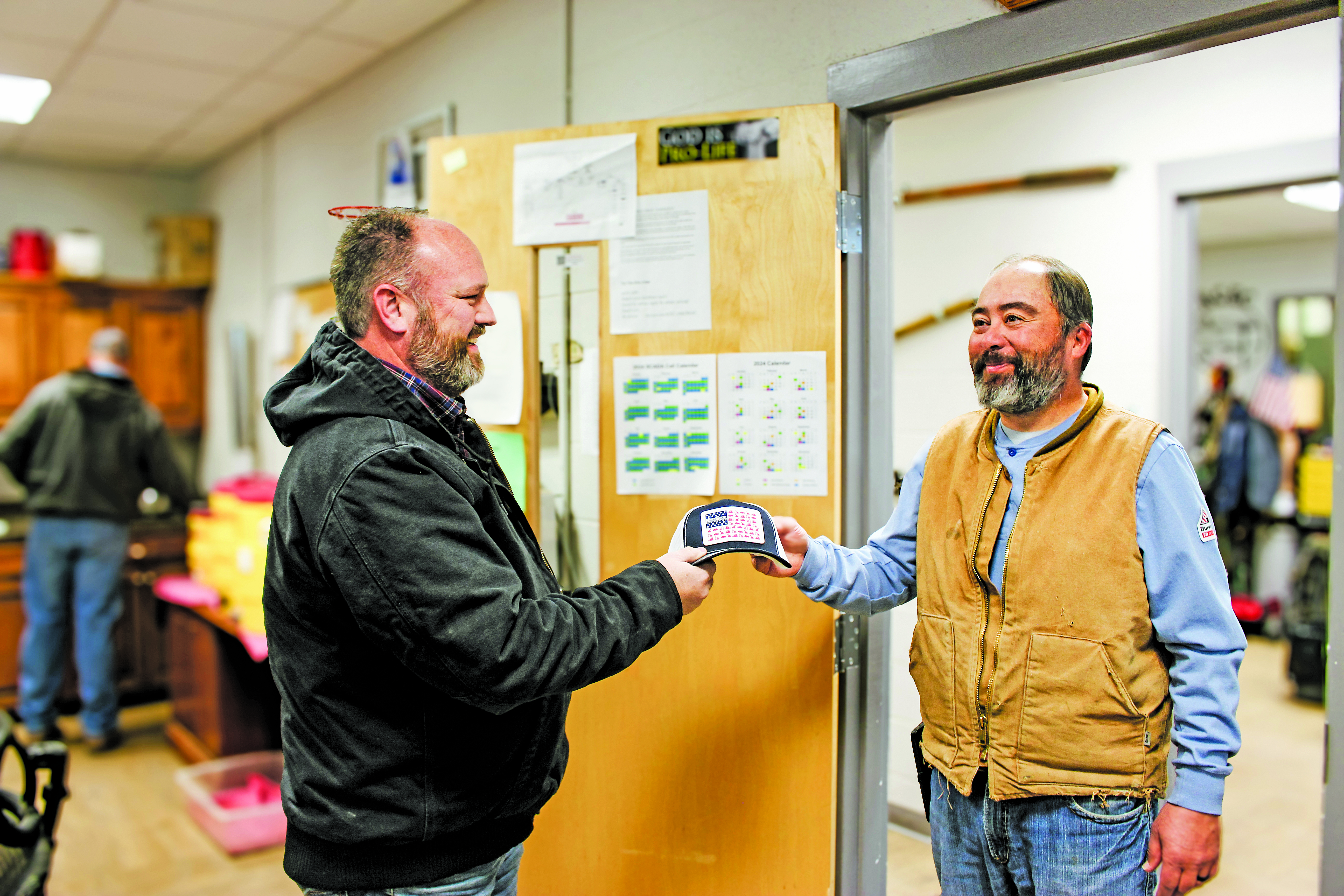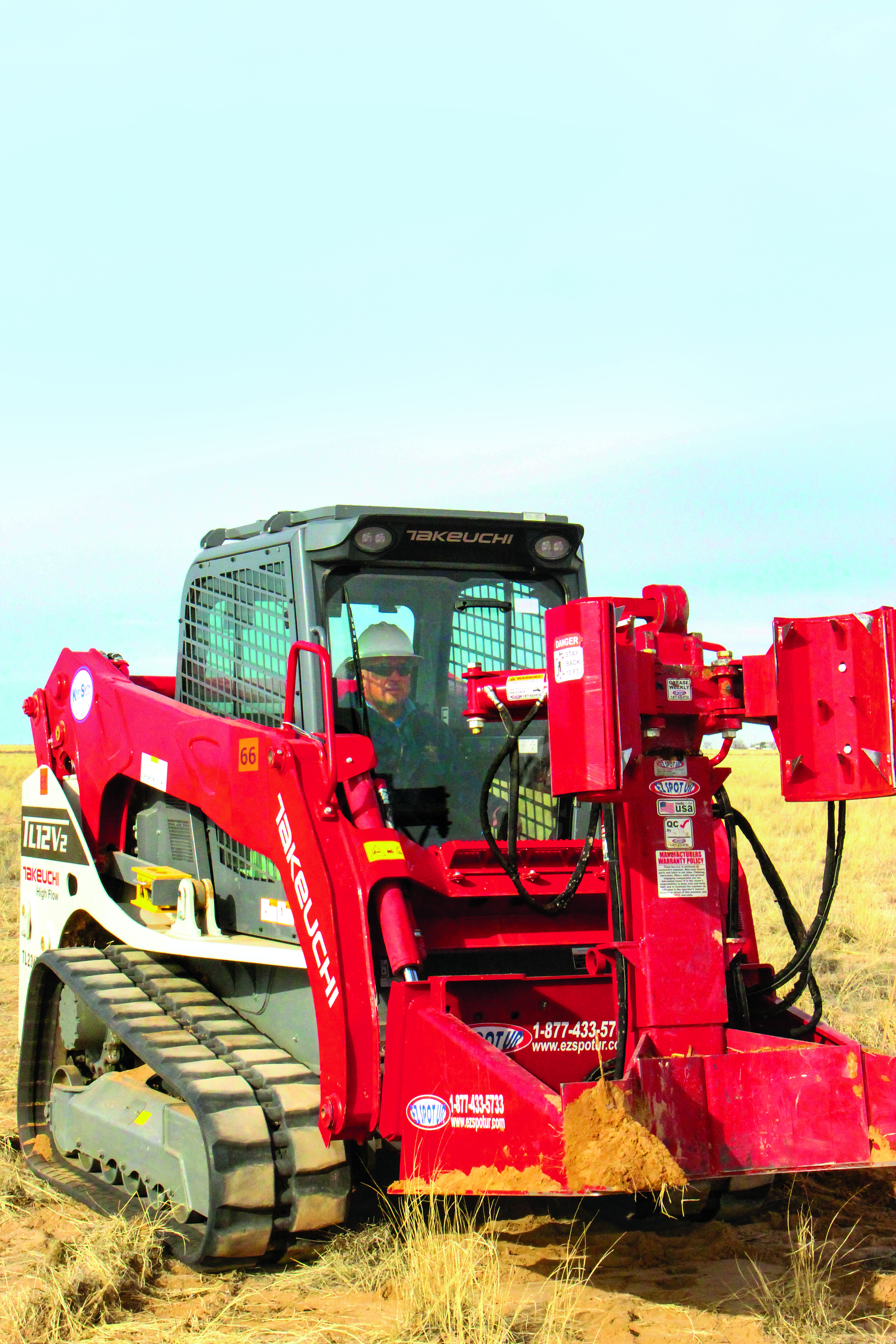
4 minute read
Roosevelt County Electric Cooperative Inc.
RCEC
Roosevelt County Electric Cooperative Inc. finds better way of removing poles with Takeuchi compact track loaders and the right attachments
Roosevelt County Electric Cooperative Inc. (RCEC) recently celebrated its 86th anniversary, and while times and styles have changed since it was started in 1938, its commitment to consumers hasn’t. RCEC continues to provide safe, reliable and affordable electric service in New Mexico.

“We are owned by those who we serve, and we take a lot of pride in doing right by them,” said Line Superintendent Sammy Villanueva, who is part of a 40-person staff at RCEC. “We’re just a small to medium-sized cooperative that provides power to the people of Portales, as well as Roosevelt County and a little bit into Chaves and Lea counties. We serve roughly 6,000 customers and have more than 2,600 miles of line.”
Villanueva and the 15-person line crew are tasked with ensuring power transmission gets from substations to customers’ houses. Their work includes hookups, disconnects and replacing power poles as necessary. For the latter, RCEC recently added two Takeuchi compact track loaders: a 10,270-pound, 74.3-horsepower TL10V2 and a 13,190-pound, 111.3-horsepower TL12V2.
“In the past, we didn’t really have the capabilities of pulling a pole without a backhoe, and that involved digging a big old hole and disturbing a lot of dirt,” said Villanueva. “It just wasn’t a good situation. We were looking for a better, safer way, and the Takeuchis were a perfect solution.”
High flow, low ground pressure
While pulling poles is their main use, RCEC uses the loaders for a variety of tasks. Both feature high-flow hydraulics — 32.8 gpm for the TL10V2 and 40.4 gpm for the TL12V2 — that Villanueva said was a necessity.

“We definitely wanted high flow for some of the attachments,” stated Villanueva, noting that RCEC runs buckets, forks, a shredder, a hammer, an auger, a pole puller and more. “The pole puller was a big consideration. The Takeuchi loader is the power plant behind it, and it allows us to remove a pole relatively quickly without major ground disturbance.”
Villanueva added, “The rubber tracks are great too because they have low ground pressure, which helps minimize ground disturbance. That also allows us to get into areas we can’t with a bigger machine, especially after a big storm. In the county we live in, there is a lot of sand, and the tracks allow us to go darn near anywhere. If we need to, we can pull our bucket and digger trucks with the Takeuchis because they have the power and weight to be able to do it.”
Operator Cesar Gonzales said RCEC often pulls 10 to 12 poles a day with the TL10V2 and TL12V2.
Equipment Manager Andy Galvan commented, “At first, I wasn’t sure about the Takeuchis, but we have put them to the test, and they have held up to everything we have asked them to do and then some.”

Excellent service from KSM
RCEC worked with Kirby-Smith Machinery Inc. (KSM) Territory Manager Brady McAlister to purchase the compact track loaders and the various attachments.
“Brady was recommended to us, so we reached out and he set us up with a demo,” recalled Villanueva. “He’s been with us every step of the way, from recommending the right machines and attachments to making sure we are taken care of from a service standpoint. Kirby-Smith helped us with the first maintenance service, and now we have our in-house mechanics doing them with parts from Kirby-Smith. I think one of the biggest things for us was that Brady answered our first call, and he’s been responsive to any need we have had, and we haven’t always found that with other dealers. The pole puller isn’t something that Kirby-Smith carries, but Brady reached out to the manufacturer to get it.”
Villanueva concluded, “We can see that these machines are the right tool for the job, and we are going to be using them for a long time to come. There are not that many Takeuchis around here, but I think that will change going forward when other cooperatives see how we use them.” ■
*The opinions expressed here are from the end user as quoted. The results described herein are those of these end users under certain conditions. Individual results may vary.










